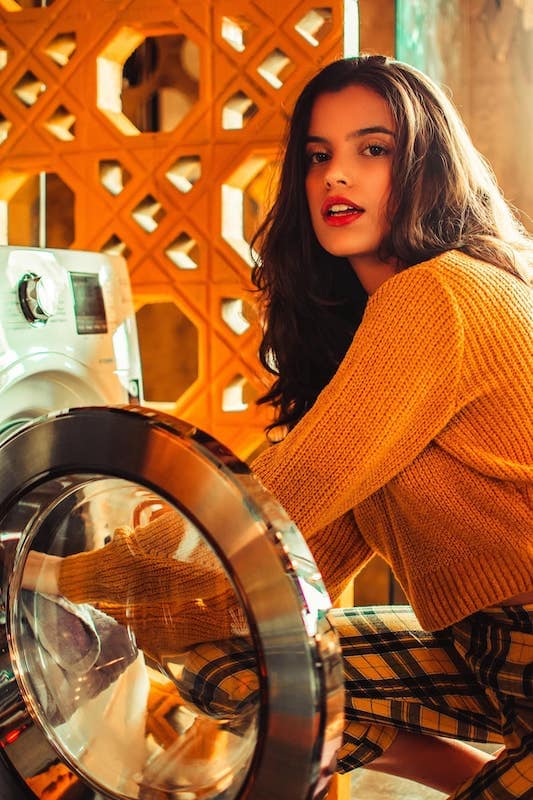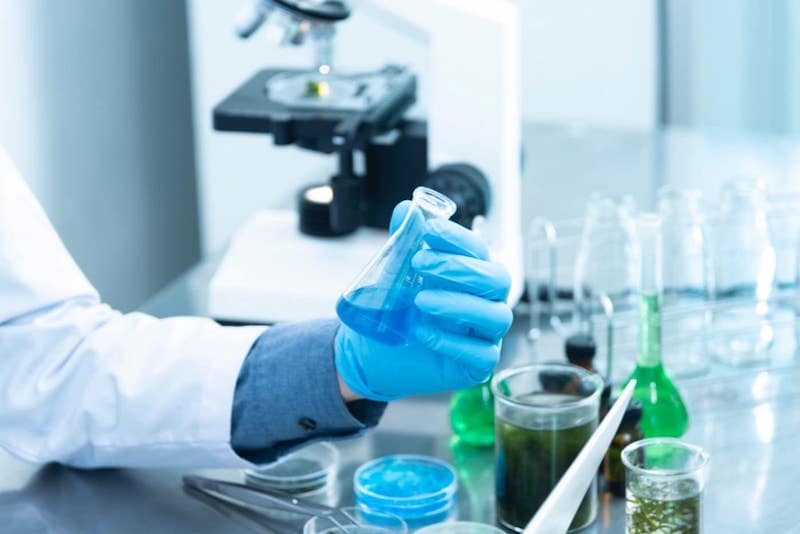In our last article Microplastics 101, we introduced our readers to the topic of microplastics; where they come from, the threat to human and environmental health and tips of how we can all reduce the harmful effects of this pollutant. Now we want to tell you exactly what Aquafil, the producer of ECONYL® regenerated nylon, is doing to help.
There are many sources that microplastic derive from, but synthetic microfibres are a type of microplastic released from oil-based fibres and one of the causes for microplastics being released. They are usually released during the machine-washing processes – both industrial and household – from clothes and textiles made from synthetic textiles.
They can lead to environmental damage, much like other microplastics, and are often ingested by marine organisms which mistake them for food.
Like larger plastic items, microplastics do not effectively biodegrade. Instead, they might photodegrade, breaking down into smaller pieces through light, leading to greater numbers of smaller microplastics that are even harder to identify and remove from the environment. So, what can we do to tackle the issue?
Well, these tiny fibres are difficult to measure, so before we can begin to try to minimise and eradicate the impact of microplastics we need to know more about them. As synthetic fibers are one of the causes, Aquafil – the manufacturer of ECONYL® yarn – is committed to finding a globally recognized and standardized method to measure the quantities of microfibers in our waters and analyze them. This way, companies and industries all over the world can tackle the problem using scientific knowledge and methods to back up their work.

Aquafil have partnered with STIIMA CNR, a research and innovation centre focusing on polymeric materials, fibres and textile science. Aquafil believe that the first step to help solve the microplastics issues is to have a globally recognised and standardised method for recognising and analysing the microplastic footprint of products. For this reason, the company has funded a three-year research partnership with the National Research Council of Italy to achieve this.
Aquafil and STIIMA CNR are working on a joint project with the aim to develop a tool to accurately measure the microplastic footprint of a product or production process. The aim of the research is to develop processes and tests to analyse physico-chemical aspects of microplastics, including dimensions, shapes, quantity and composition. This is particularly significant as the chemicals that make up the microplastics can break down and react with elements in the wider environment, sometimes forming more toxic and persistent substances. So if we can find a way to measure microplastics, we can therefore find a way to minimise their impact.
Next steps for the project, is for this international method to become a UNI/ISO – CEN approved testing method. It will become an official methodology recognized as a worldwide reference, to allow a correct measurement and evaluation of the release of microplastics from textile processes and product which will hopefully have long lasting impact on the way all textile products are created and processed.

Aquafil are also engaging with other industry partners, for example working with California-based sustainable textiles consultancy Materevolve and the National Oceanic and Atmospheric Administration (NOAA) Marine Debris Program. In 2020, Materevolve curated the “California Microfiber Workshop: Science, Innovation & Connection” to bring together 85 California leaders in marine science, policy, and sustainable textile innovation. The purpose was to connect, share knowledge, and discuss solutions for microfibre pollution. You can read the full report and its findings here.
Synthetic clothing is a cause of microplastic pollution, and this is largely due to the shedding of microfibres throughout the textile’s lifetime. However, as consumers become more environmentally aware and interested in the provenance of their purchases, manufacturers and brands will feel more pressure to meet growing expectations for more sustainable clothing and provide full transparency over where their items come from and how they have been made. This, we hope, will spur an industry-wide shift to achieve global change.
At Aquafil, they continue to support and collaborate on new research into microplastics and microfibres. The company will continue to innovate and share its knowledge with the industry and work towards designing with circularity in mind.
Links/Sources:
Preparation and analysis of standards containing microfilaments-microplastic with fibre shape
Sample Preparation and Analysis Methods of Microplastics
Ji-Su Kim, Hee-Jee Lee, Seung-Kyu Kim, and Hyun-Jung Kim: Global Pattern of Microplastics (MPs) in Commercial Food-Grade Salts: Sea Salt as an Indicator of Seawater MP Pollution (Environmental Science and Technology, 2018)
Napper, I. and Thompson, R. (2016). Release of synthetic microplastic plastic fibres from domestic washing machines: Effects of fabric type and washing conditions. Marine Pollution Bulletin. Available at: https://www.sciencedirect.com/science/article/pii/S0025326X16307639?via%3Dihub
https://www.statista.com/statistics/741296/world-fiber-consumption-distribution-by-fiber-type/
https://www.sciencedirect.com/topics/chemistry/nylon-6
https://www.unep.org/interactive/beat-plastic-pollution/
Author: Eco Age



















